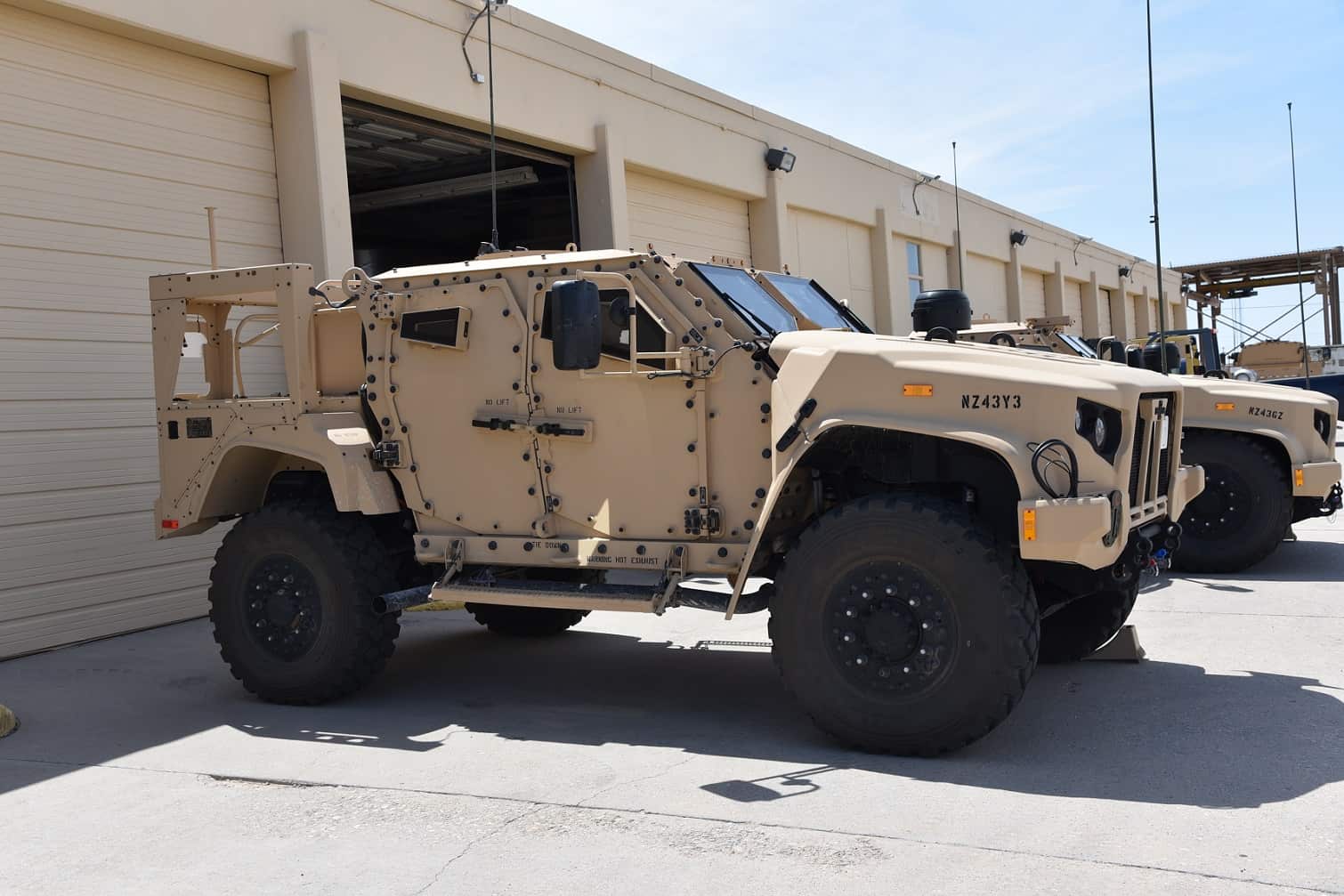U.S. Army Joint Modernization Command receives first JLTVs
Posted on
The U.S. Army Joint Modernization Command, or JMC, has received first 11 Joint Light Tactical Vehicles. The newest in Army vehicles have arrived on Fort Bliss.
JMC conducts the integration and evaluations of the Army’s objective analysis and feasible recommendations to provide Doctrine, Organization, Training, Materiel, Leadership and Education, Personnel and Facilities recommendations to the Army. JMC gets capability solutions into the hands of soldiers faster than traditional channels by utilizing support from combat, training, and material developers and engineers early on in the development lifecycle.
As to Joint Light Tactical Vehicles, or JLTV, this is a new family of military vehicles designed for the U.S. Army and Marines Corps.
Soldiers and civilians from the JMC spent two weeks in August training on driving and maintaining the JLTV, which is a light truck designed to hit the sweet spot between force protection and maneuverability. The JMC’s 11 JLTVs are the first on Fort Bliss.
The Army has designed the JLTV to be able to take on any type of terrain while still offering enough protection to take a hit from the enemy. It will do any number of jobs that heavier or lighter Army vehicles can’t. As Sgt. First Class Vincent Storer, JMC’s master driver, said, “It’s a nice middle ground between a Humvee and an MRAP (Mine-Resistant Ambush Protected vehicle).”
The Army took Humvees into Iraq and Afghanistan, but found the vehicles didn’t provide enough protection from improvised explosive devices and other attacks. In came the MRAP, which offered a lot of protection, but at as much as 20 tons in weight, couldn’t maneuver as well in battle.
“The JLTV is a good vehicle; it’s a step up from a Humvee,” Storer said. “There’s good ground clearance, and with the snorkel kit, you can ford deeper water. It handles well in a variety of terrain. All the BII (basic issue items) are stored securely outside the vehicle, so you don’t have to worry about those. And the rear-view camera makes it easier to back up, to park, or just for security, you can see what’s behind you.”
One of the features exciting Soldiers who have driven the JLTV is a hydraulics system that not only minimizes jarring bumps in all terrains but allows Soldiers to adjust the suspension to park on a hill and level the vehicle.
“We parked on the side of a hill, probably a 30 percent grade, then put the assist on,” Storer said. “It got us level to where I could open the door and step out and not have to worry about rolling over.”
Jason Lairson, JLTV training specialist for OshKosh Defense, which built the JLTV, said much of their training is focused on giving Soldiers familiarization and confidence handling the vehicle’s many advanced features.
“The JLTV has new technologies, new capabilities that they are not used to,” Lairson said. “We have to teach them how much more capable this truck is than anything they’ve ever operated before.”
Later this year, the JMC, in support of the TRADOC Capability Manager Stryker Brigade Combat Team (TCM-SBCT), will begin an independent assessment to determine the optimal number of JLTVs needed in light infantry brigades. The JMC will be leading a one-year assessment of JLTVs in two light infantry brigades, said Dan Kinn, military analyst with JMC.


Subscribe to our newsletter
Promotions, new products and sales. Directly to your inbox.
